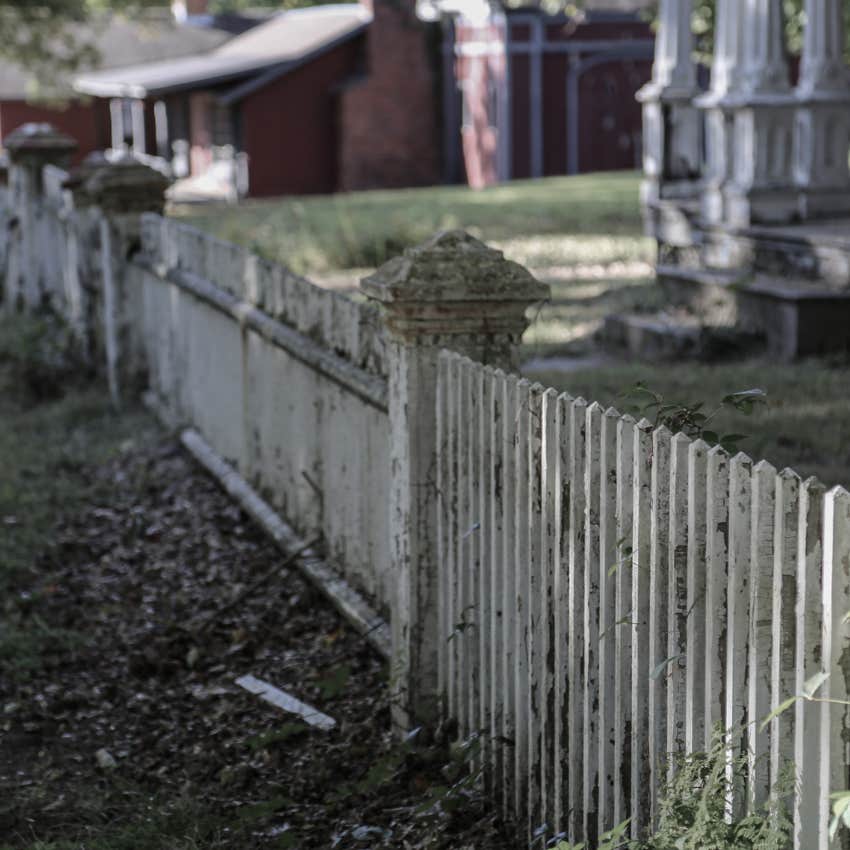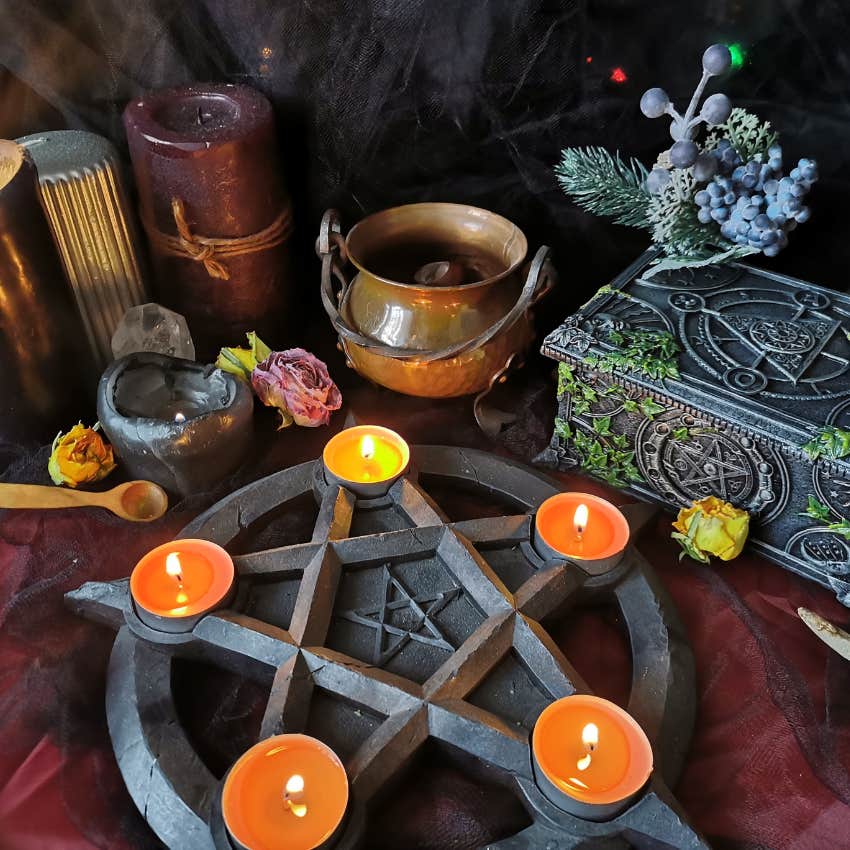Ever wonder if some places on Earth are just too spooky for even the bravest adventurers to set a foot in? The U.S. has no shortage of mysterious spots—from the eerie vanishings in the Alaska Triangle to shadowy figures lurking in Big Sur—but none quite like Dudleytown, Connecticut. Nestled deep in what locals ominously call the Dark Entry Forest, this so-called ghost village is shrouded in such thick mystery (and whispers of curses) that it’s been locked away from the curious and the creepy alike. Now, here’s a thought to chew on—on a day when Mercury might be doing its usual dance of confusion and mischief, could it be influencing the tales of madness and misfortune that cling like fog to Dudleytown’s past? Let’s dive into the eerie legends, bizarre deaths, and wicked theories that make this deserted valley a paranormal puzzle wrapped in an enigma. Ready to peek behind the haunted curtain? LEARN MORE.
The United States is filled with mysterious, mystical, and terrifying places that avid adventurers would love to explore. Some of them are accessible, like the Alaska Triangle, where people tend to disappear, the paranormal vortex known as the Bridgewater Triangle, the place where murder is thought to be completely legal, the “Zone of Death,” or a place where dark figures are said to haunt the area.
Advertisement
But as frightening as all of those places are, there is one particular town in northwestern Connecticut that is so haunted and cryptic that it has been labeled off-limits to visitors and looky-loos. Best known as a ghost town, Dudleytown, Connecticut is the subject of many strange theories.
 Carolyn Delacorte / Shutterstock
Carolyn Delacorte / Shutterstock
Advertisement
Dudleytown, Connecticut, was never really a town, but a village located in a valley called the Dark Entry Forest, a few miles south of the Cornwall Bridge.
The location was given the name Dudleytown early in the 1740s when Thomas Griffis, Gideon Dudley, Barzillai Dudley, Abiel Dudley, and Martin Dudley settled there, along with several other families.
Dudleytown was converted to farmland, and the Dudley family, as well as the others, worked the land. But because it sat atop a hill, the location was not the best for farming, so when more fertile land became available in the 19th century, the population quickly declined.
Advertisement
Since then, the public has been banned, and Dudleytown has become dark and silent.
Like most theories about the unknown, the Dudley curse gained traction as the use of the internet grew.
The Dudley curse is centered around Edmund Dudley, an English nobleman who hatched a plot to overthrow King Henry VIII. He ended up getting beheaded for treason, but, according to legend, a curse of death and misfortune was placed on the Dudley descendants.
Edmund had a son, John Dudley, who, in an effort to seize control of the British throne, arranged for his son, Guilford, to marry Lady Jane Grey. She had become queen for a short time, but the plan failed, resulting in the execution of her, Guilford, and John.
Advertisement
But the bad luck didn’t stop there. When Guilford’s brother, a military officer, came home from France, he brought a plague with him. It spread rapidly and killed masses of soldiers before spreading through the country and leaving thousands dead.
It’s easy to understand why the Dudleys were presumed to be cursed. Unfortunately, the string of calamity they experienced gave way to the belief that the supposed “curse” had followed the family to America and haunted Dudleytown.
One huge hole in the theory is that while William Dudley, the ancestor of many of the people who settled there, was thought to be the descendant of Robert Dudley, son of the executed John, he was not. John had two children, one who died in adolescence and another who lived in Italy.
Advertisement
Still, several strange things happened at Dudleytown that seemed to make it more susceptible to the deaths of inhabitants than other places.
While some of the Dudleys moved on and had normal existences, Abiel stayed and ended up losing his fortune before he eventually lost his mind. His property was confiscated and sold. He became “insane” and suffered from senility.
A friend of Abiel’s, Gershon Hollister, was building a barn for his neighbor, William Tanner, when he was killed. Then Tanner himself became mentally impaired and senile. Rumor has it that he spoke of creatures coming out of the woods at night, but this has been attributed to dementia.
A man named Nathaniel Carter moved into Abiel’s repossessed home and soon found his relatives afflicted with a plague that killed many of them. The survivors moved to Delaware, but the curse apparently followed them.
Advertisement
Carter, his wife, and child were killed by Indigenous people whose land they had settled on. His other three children were taken to Canada and his two daughters were ransomed. His son, who remained captive, married an Indigenous woman before returning to the U.S. and eventually becoming a Supreme Court justice.
In 1804, a general named Herman Swift’s wife, Sara Faye, was struck by lightning while on their front porch and died. Not long after, like others had before him, the general went “insane” and passed away.
Then there was Horace Greeley, editor and founder of “The New York Tribune.” He was married to Mary Young Cheney, who was believed to have been born in Dudleytown. In 1872, Cheney died from an alleged suicide, followed just a month later by Greeley.
This incident has been debunked as part of the curse, as it was uncovered that Cheney actually lived in Litchfield, not Dudleytown. It turned out that she died from lung disease and did not kill herself as rumored.
Advertisement
Since the village of Dudleytown has grown in popularity, it has been closed off to the public. Connecticut State Police have warned that trespassers will be arrested. But there are several theories that have been offered on the existence of the “curse.”
The curse doesn’t really exist
Dr. John F. Leich has been a Dark Entry Forest resident for over 50 years. He asserts that there is nothing paranormal or extraordinary about Dudleytown. He and his wife spend every summer there, along with 50 other shareholders, and have witnessed nothing strange.
Advertisement
The origin of the curse is flawed
A Dudley family genealogist, Reverend Gary Dudley, points at the alleged origin of the curse and the fact that Edmund Dudley’s descendants are not the same Dudleys who settled in Connecticut later on.
The people of Dudleytown are under the influence
Another assertion by Reverend Dudley is that the rye produced in the small town rotted, creating mold, a hallucinogen that caused them to see “ghosts” that never really existed. He thinks the entire curse is a result of “bad bread.”
Advertisement
The curse is rooted in witchcraft
 Nakaya / Shutterstock
Nakaya / Shutterstock
Another wild theory about the Dudleytown curse comes from ghosthunter and demonologist Ed Warren. He believes that an ancestor of the Dudleys was an English judge who sentenced many to death for witchcraft, resulting in the family curse.
The stakeholders are engaging in a cover-up
Advertisement
Nancy Ziegler, who co-authored the book Deadleytown, has attributed the skepticism about the curse to the stakeholders of Dudleytown. She claims they have a vested interest in covering up the strange happenings and even claims to have been slapped and scratched by ghosts.
Others have attributed the myth of the curse to men wanting to scare their girlfriends and inspire them to get closer to the Dark Entry Road. But others have shared their own accounts of “feeling a presence” in Dudleytown.
NyRee Ausler is a writer from Seattle, Washington, and the author of seven books. She focuses on lifestyle and human interest stories that deliver informative and actionable guidance on interpersonal relationships, enlightenment, and self-discovery.
Advertisement
Auto Amazon Links: No products found.

This will close in 0 seconds
This will close in 0 seconds